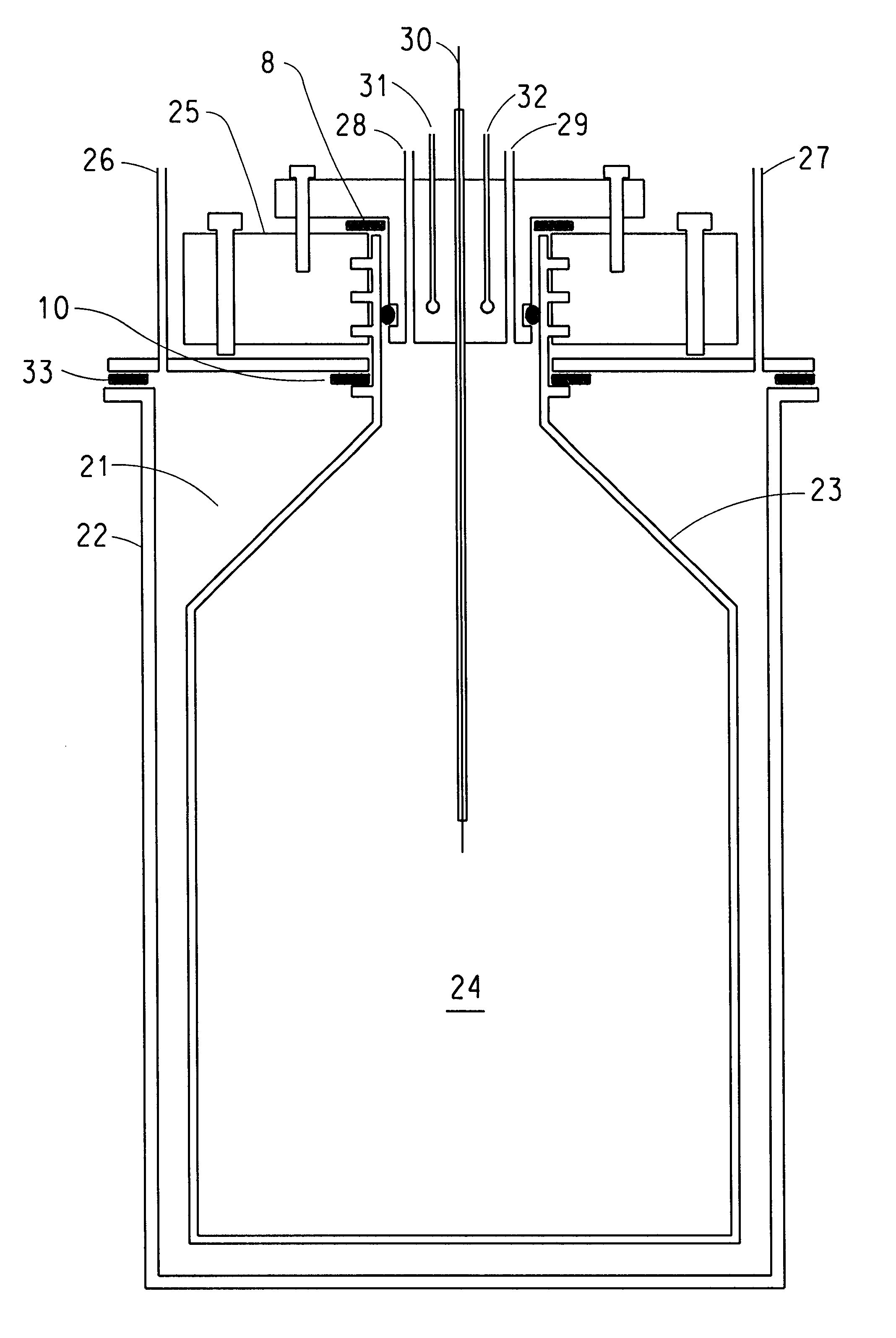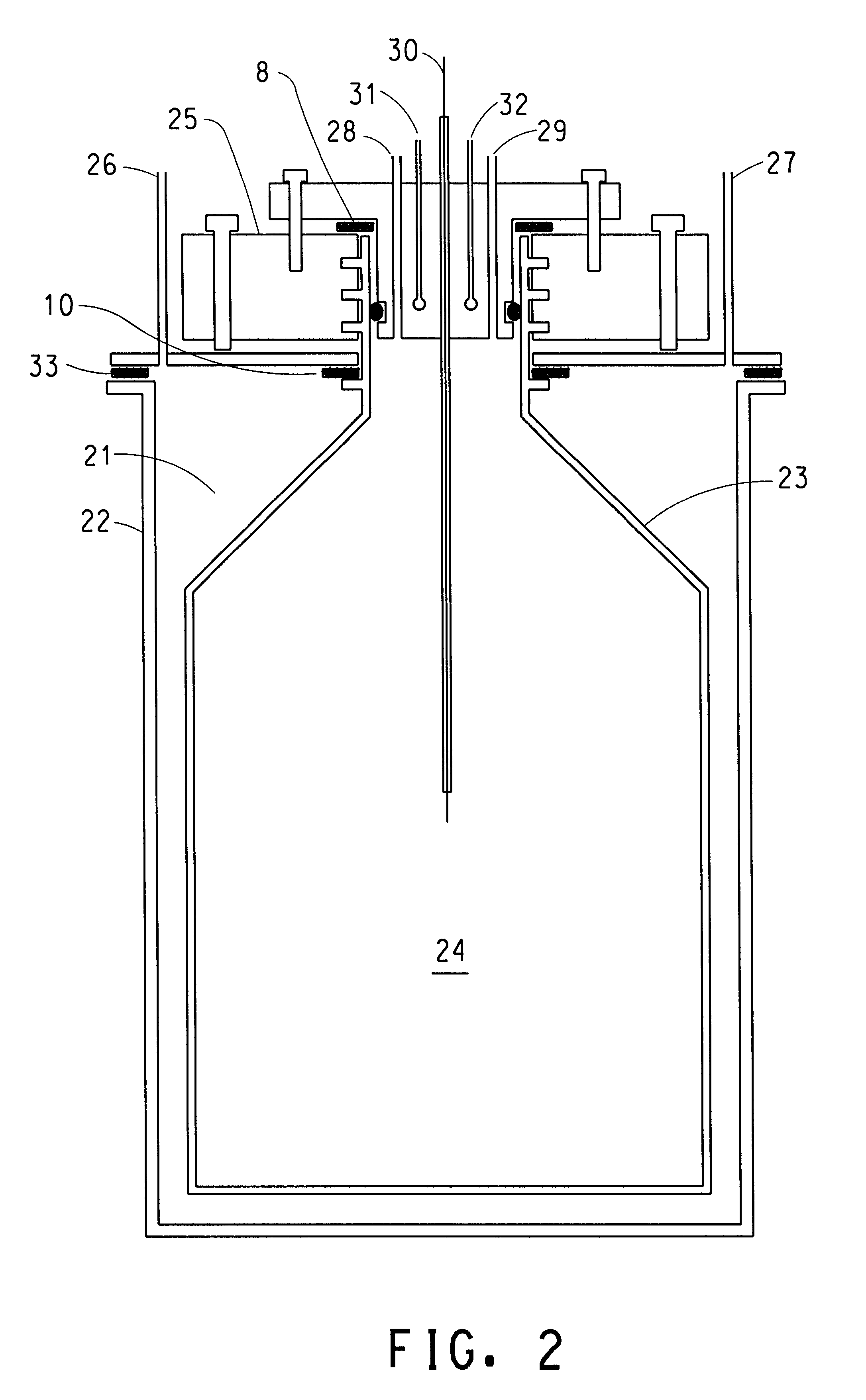Method for determining gas accumulation rates
a gas accumulation rate and gas technology, applied in the direction of instruments, porous material analysis, fluid detection at leakage point, etc., can solve the problem of no known practical method for separating oxygen, aggravated problem, and particularly susceptible to diffusion-related deterioration of plastic goods
- Summary
- Abstract
- Description
- Claims
- Application Information
AI Technical Summary
Problems solved by technology
Method used
Image
Examples
example 1
Permeability of a Polyester Bottle
A commercially available blow molded polyethylene terephthalate bottle with an internal volume of 540 ml was secured into an apparatus according to FIG. 2. Both the bottle and annular space were evacuated to a pressure of 200 mtorr using a mechanical roughing pump de-gassed for a total of 60 min. Then the bottle was filled with dry nitrogen containing 220 ppm argon and the annular space simultaneously filled with an equal pressure of a mixture of 50% .sup.18 O.sub.2 and 50% the same nitrogen / argon mixture as added to the bottle. Both chambers were pressurized to ca 2% above atmospheric pressure. The ambient temperature was approximately 26.+-.1.degree. C. over the duration of the measurement. Samples were acquired at approximately hourly intervals for the first forty hours, then less frequently for the remaining 120 hours of the measurement. Sample acquisition was accomplished by manually opening a Valco Instrument Company, (Houston Tex.) capillary ...
PUM
| Property | Measurement | Unit |
|---|---|---|
| atmospheric pressure | aaaaa | aaaaa |
| pressure | aaaaa | aaaaa |
| internal volume | aaaaa | aaaaa |
Abstract
Description
Claims
Application Information
 Login to View More
Login to View More - R&D
- Intellectual Property
- Life Sciences
- Materials
- Tech Scout
- Unparalleled Data Quality
- Higher Quality Content
- 60% Fewer Hallucinations
Browse by: Latest US Patents, China's latest patents, Technical Efficacy Thesaurus, Application Domain, Technology Topic, Popular Technical Reports.
© 2025 PatSnap. All rights reserved.Legal|Privacy policy|Modern Slavery Act Transparency Statement|Sitemap|About US| Contact US: help@patsnap.com



